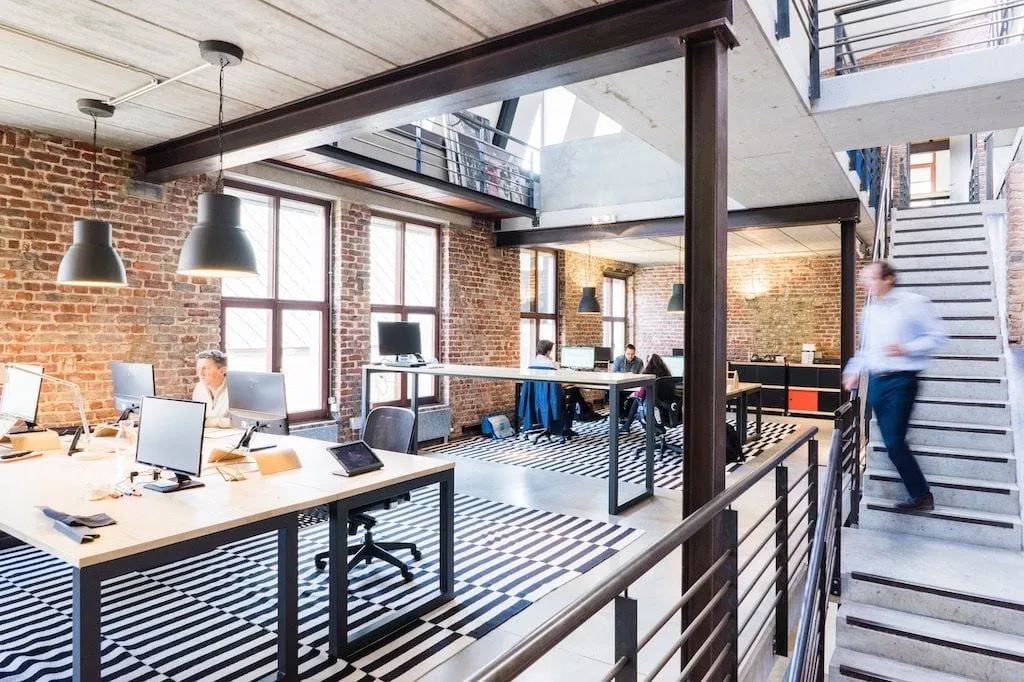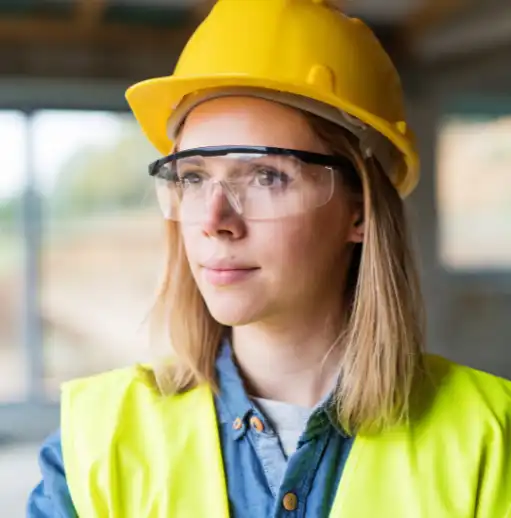
The modern trend of moving into older spaces specifically for the classic architecture has a lot of aesthetic appeal, but it might leave you with a workplace that’s less than ergonomic. Exposed brick on exterior walls and air ducts crisscrossing the ceiling look great, but how much productivity are you sacrificing to drafts and poor noise dampening?
The key is discovering how to make an office that perfect blend of classic appeal and modern feel. So, while we don’t recommend covering up all that original brick or drywalling over exposed beams, there are a few simple tricks to balancing traditional and contemporary.
Here’s how to bridge the gap between your older workplace and the trending modern office designs that workers need for a positive employee experience.
Update the fixtures
Lighting is always a prime candidate for updates in an office makeover. Ditch the fluorescent bulbs for softer LEDs and swap worn-out fixtures for modern, minimalist accents that complement the space.
Upgrading the lights reduces eyestrain by brightening the office. But there’s another reason to change the lights: it makes your energy bills look better, too. Lighting consumes 17% of energy in modern offices, so switching to higher-efficiency bulbs can save you a lot of money.
Add new tech
The fastest way to make an office look modern is to roll out technology upgrades. Televisions and mounted video screens can make a big impression. A laptop or tablet charging dock can influence the feel of a space. For a broader impression, digital wayfinding is both practical and appealing. You can even add exposed network cabling overhead for an effect that’s so modern it starts to feel futuristic.
Bring in greenery
Biophilic design is a major element in modern offices. It’s also a great way to bridge an older workplace atmosphere and modern design themes. Add live greenery throughout the office with a variety of floor and table plants. If possible, hang a few baskets of non-flowering plants throughout the office. Plants balance mood, lighten the color palate, and even help purify the air. They’re also inviting, making employees feel welcome when they arrive at a new hotdesking station.
Introduce art
Pick an art theme and go wild in your workplace. Whether you choose eclectic, surreal, modern, industrial, or classical art, scatter wall décor throughout the workplace. The workplace of the past may have had barren white walls, but the workplace of today should be anything but. We’re all long past the posters with TGIF cats or inspirational quotes about teamwork and leadership.
Engaging art offers employees a chance to take a quick break from work and look out past their computer screens. They can let their imaginations run wild for a few minutes before jumping back into a spreadsheet emotionally recharged.
Lose the walls
Speaking of walls, if you don’t need them, knock them down. Not only will you gain newfound square footage, but you’ll also shift closer to a modern workplace aesthetic. It’s a big task that’ll cost money, but opening your floor plan definitely says “modern office.”
Removing walls has the added benefit of bringing sunlight to more spaces in the workplace. Now, instead of only the desks around the edges of the room having natural light, a lot of the spots closer to the center of the room enjoy it, too. It might seem like a small thing, but according to a study conducted by the World Green Building Council found that employees working in well-designed offices with access to natural light had a 20% increase in productivity.
Choose a minimalist theme
Like when you’re picking art, settle on an office design theme and stick to it in a minimalist way. For example, choose modular furniture with clean lines or industrial accents based on the aesthetic that best suits your brand. Going overboard can leave you with a workplace that feels cluttered. Stick to simple accents and build a cohesive theme.
That line about “sparking joy” might already feel like a cliche, but there’s a lot to be said for having only what you need, nothing more. Think of it this way: Everything in the office that doesn’t need to be there is a distraction.
Accent all the texture
Texture is readily present in older office spaces, but it needs accenting in a modern way. You have what you need already there, but you need to make it a bit easier to see. Create focal points with brick walls, exposed architecture, or original features. Accent brick with a subtle carpet pattern or offset exposed steel with leather furniture. Combining and accenting textures is a great way to make the most of existing features by employing them in new concepts.
Consider color carefully
Color is crucial. Whether you choose to focus on your brand’s colors or have a different palate in mind, pick accents that inspire. Remember, you want employees to feel energized and focused. Clients in the office for meetings should get a reassuring visual vibe.
Find cohesion by hanging red art on a cream brick wall, putting blue furniture on a beige carpet, or painting walls purple to offset black and steel architecture. Color binds the many elements of your workplace together and can be the key in reinvigorating it, your workforce, and clients.
Try window treatments
Window treatments are a great design element in their own right. They’re also great for adding a modern touch. Install blinds or cellular shades to add a nice contemporary look to your workplace. As part of a full facility makeover, window treatments have the transformative ability to turn the clock forward.
Put comfort first
Antiquated office spaces don’t have a reputation for being comfortable. Specifically focusing on comfort in your workplace breaks that stigma. Invest in comfy furniture, ergonomic desks, and informal environments where employees can connect, collaborate, and de-stress. Comfort adds a modern touch that few individual design elements can by themselves.
Keep it clean
Regardless of the changes you make, make sure your workplace is always clean. An unorganized or cluttered workplace quickly loses its appeal, which can drag down the atmosphere. If there are older elements in your space, the clutter may magnify them, leading to an overall feeling of dinginess. Keep in mind, clean carries a connotation of “modern.”
With the rise of the hybrid work model, facility and office managers are finding scheduling cleaning more challenging. But, with the use of sensors to track occupancy and use, they’re able to make data-driven decisions and where and when to send in the cleaning crews.
Short of taking a wrecking ball to your office for a complete “down to the studs” renovation, there’s not a lot you can do about the building materials and architecture. To bring your workplace into the modern era, you can focus on the design elements you do have control over.








